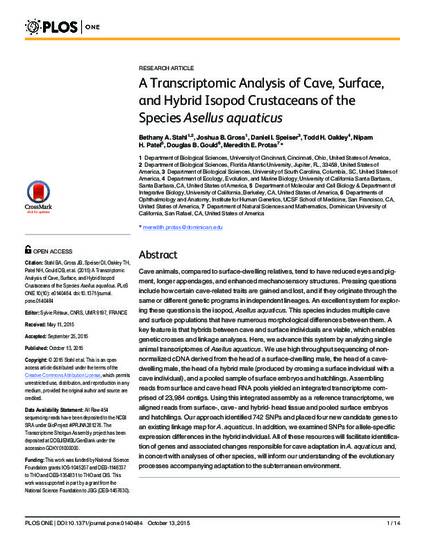
Cave animals, compared to surface-dwelling relatives, tend to have reduced eyes and pigment, longer appendages, and enhanced mechanosensory structures. Pressing questions include how certain cave-related traits are gained and lost, and if they originate through the same or different genetic programs in independent lineages. An excellent system for exploring these questions is the isopod, Asellus aquaticus. This species includes multiple cave and surface populations that have numerous morphological differences between them. A key feature is that hybrids between cave and surface individuals are viable, which enables genetic crosses and linkage analyses. Here, we advance this system by analyzing single animal transcriptomes of Asellus aquaticus. We use high throughput sequencing of non-normalized cDNA derived from the head of a surface-dwelling male, the head of a cave-dwelling male, the head of a hybrid male (produced by crossing a surface individual with a cave individual), and a pooled sample of surface embryos and hatchlings. Assembling reads from surface and cave head RNA pools yielded an integrated transcriptome comprised of 23,984 contigs. Using this integrated assembly as a reference transcriptome, we aligned reads from surface-, cave- and hybrid- head tissue and pooled surface embryos and hatchlings. Our approach identified 742 SNPs and placed four new candidate genes to an existing linkage map for A. aquaticus. In addition, we examined SNPs for allele-specific expression differences in the hybrid individual. All of these resources will facilitate identification of genes and associated changes responsible for cave adaptation in A. aquaticus and, in concert with analyses of other species, will inform our understanding of the evolutionary processes accompanying adaptation to the subterranean environment.
Copyright © 2015 The Author(s)
Available at: http://works.bepress.com/meredith-protas/6/
